
This shot of George Melly captured the performer’s anarchic spirit perfectly. Credit: Brian Griffin
Brian Griffin was an estimating engineer at the British Steel Corporation in his home town of Birmingham, when the combination of an unrequited love and the desire to escape factory life led him to photography.
He revealed: “I put some pictures in a Boots photo album and tried to get a place at an art college. I got into Manchester Polytechnic. I was 21 and, to be honest, I wasn’t that interested in photography. It was a form of escape.”
In 1972, he graduated with a diploma and swiftly set about trying to build a career as a freelance photographer. He recalled: “I was a pretty confident guy. I thought I was very good but it’s debatable whether I was or not! I left college and started doing editorial photography, essentially of businessmen – for Management Today, Accountancy Age, Computing, Marketing… all those kinds of magazines.”
Several years later, in the late 1970s, his background in shooting men in suits was to prove a useful entry point into the music industry. Some of the bands of the time, such as The Jam, and Elvis Costello and The Attractions, chose to dress in suits, ties and shirts.
“Post-punk [bands] tended to dress quite smartly and were quite fashion-conscious,” explained Griffin. “I thought they looked just like the businessman I was photographing, so I wondered if I could get a job shooting music.”
He discovered that Elvis Costello was signed to the indie label Stiff Records, based in Notting Hill, London, and so visited them.
Griffin admitted: “I got my first cover through going to see Dave Robinson [founder] at Stiff Records. It wasn’t because I loved music or wanted to photograph bands. I just wanted to expand my repertoire and source of income.”
Setting up a studio
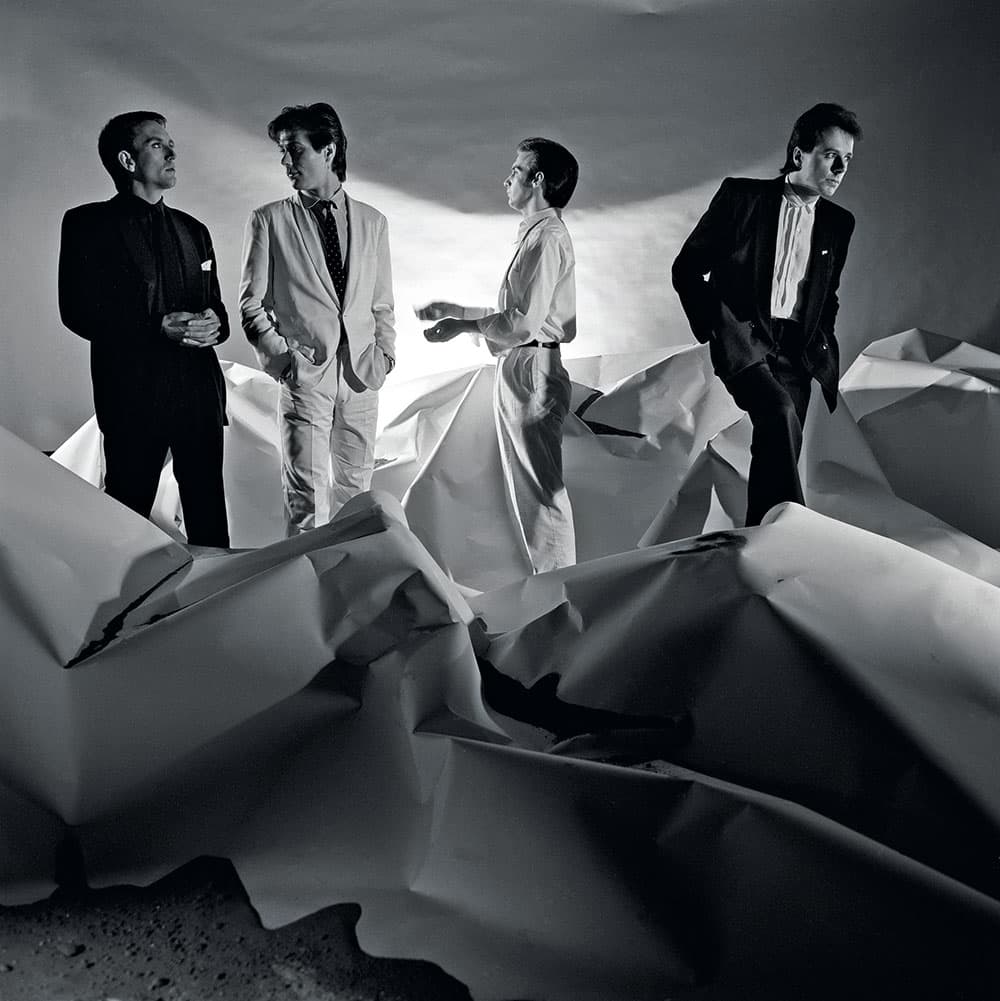
Work with suited businessmen prepared him for work like this shot of Ultravox for their album, Vienna. Credit: Brian Griffin
With an editorial client list that already included Esquire (US), Rolling Stone, Radio Times, The Sunday Times, The Sunday Telegraph, The Observer and Car magazine, Griffin was well placed to expand his business.
He recalled: “I started to do advertising, editorial and music when I got my first studio, which was in Rotherhithe Street, London, in 1980.
“I was technically quite adept because I’d studied engineering, so during the analogue days I was right ‘on it’ mathematically with exposures and all sorts of stuff. I could really get on top of things, hone my technical virtuosity and I made a great success in the ’80s through this studio. You need a studio to get really deep into photography and the analogue days helped with this because you could build multiple exposures and exciting things!”
Continues below…
[collection name=”small”]
Indeed, Griffin’s devotion to his art meant he designed and built light machines and went into what he dubs his ‘knicker elastic period’, when he created shafts of light in images by twanging knicker elastic while shining light at it. His music client base grew rapidly with the explosion of synth-pop and the New Romantic movement. He photographed the likes of Depeche Mode, Spandau Ballet and Ultravox, as well as more established musicians such as Queen, Peter Gabriel and Bryan Ferry.
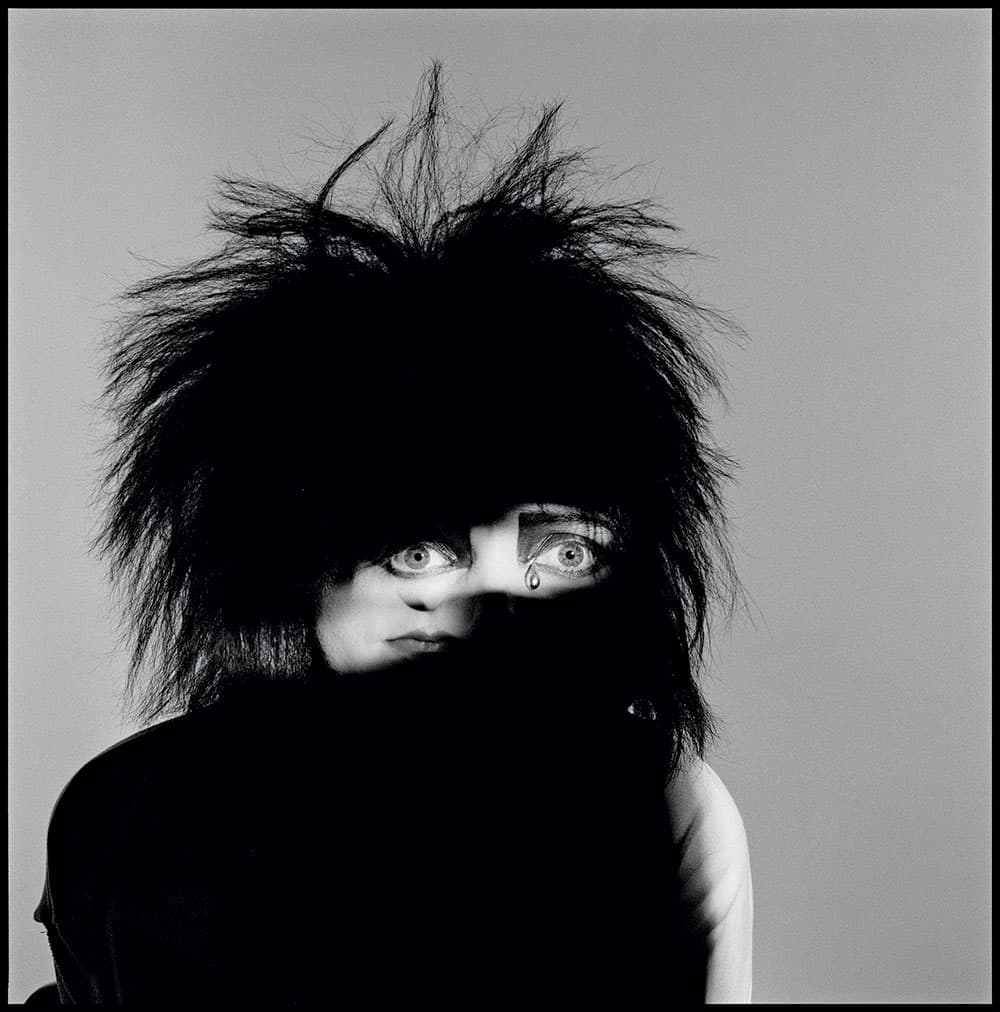
An imaginative use of double exposure trickery in this shot of Siouxsie Sioux. Credit: Brian Griffin
For his early music photography, Griffin worked with an Olympus OM-1 SLR. This meant his first record cover images – such as Joe Jackson’s Look Sharp! album – were shot on 35mm film’s 3:2 format, which was then cropped to a square.
He said: “Eventually, around about 1979, I scraped enough money together to buy a Hasselblad. I was shooting album covers, and getting a lot of work, so I realised that the most sensible thing to do was to have a square-format camera. For all of my career, up until recently, when using my Hasselblads I shot everything near enough on the same lens – a 150mm.”
Griffin has also embraced the digital age. “I started shooting digital about 2004 or 2005. I was sponsored by Mamiya with its first medium-format digital camera – the ZD. Now I use film or digital, depending on what I’m doing.
“I still use an Olympus OM-2, which I was given in 1983 by the designer of the OM-2, and two or three lenses. I also still use my Hasselblads from that period.
“All of my cameras are basically from the late ’70s to the beginning of the ’80s; all film cameras.”
He also uses a Phase One digital camera and a Mamiya 7 medium-format range finder.
Preparing POP
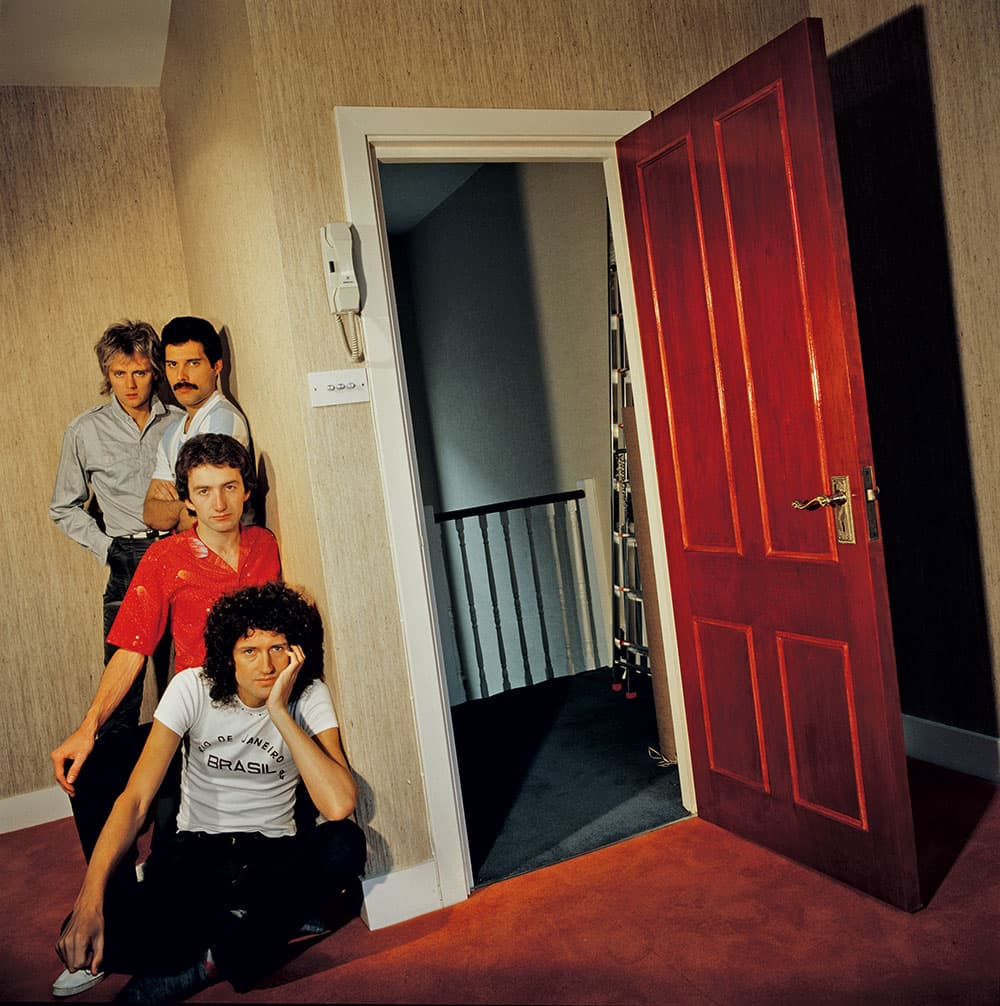
Griffin has photographed many of the world’s most famous rock bands, including Queen. Credit: Brian Griffin
Griffin first had the idea for his book POP in around 2000, when he began scanning hundreds of images from his extensive music photography archive. However, it didn’t come to fruition until relatively recently when Stuart Smith, the co-founder of GOST Books, told him ‘to get on with it’.
Smith and his staff helped Griffin put together a Kickstarter campaign to raise money – the target was £30,000 – towards the publication of the book.
Griffin explained: “Prior to raising the Kickstarter, I scanned 2,000 images – well, I had 1,000 already, so I just scanned another 1,000. I wanted the book to be an historical document of a certain area of music in this country. I felt there was a gap in photography books – there’s never been anything as extensive or as big on one photographer as this.
“There are some great music photographers, but they are mostly outdoors and ‘gig-type’ photographers. I was one of the few album cover photographers who did a substantial amount of work like covers, posters and publicity [shots]… so this was a book I got excited about.”
The resulting tome is almost 400 pages and features more than 500 of Griffin’s images. It’s a clear record of a more innocent time in the music industry when fashion was highly inventive, indie record labels were springing up and music marketing campaigns were often created through madcap inspiration rather than the ultra- cautious approach of today.
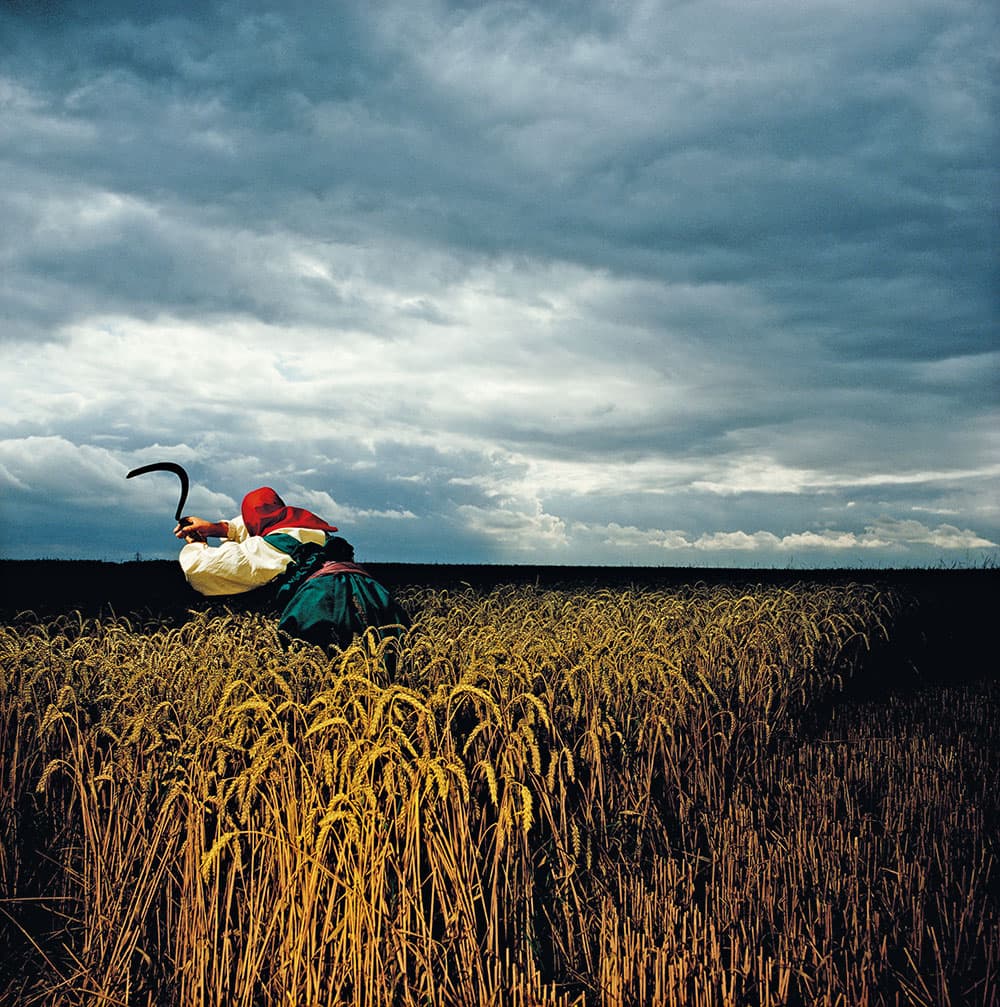
This image for Depeche Mode’s album A Broken Frame became an instant classic. The image was shot in a cornfield off the M11 motorway during a 30-minute break in rainy weather. Credit: Brian Griffin
But, interestingly, Griffin observed: “With the age of vinyl [coming back], all of my work is being re-pressed. I can go into a shop now and buy vinyl records of virtually everything I shot.
“I think it’s the perfect time for a book such as mine because of the interest in vinyl. It’s also a book on fashion because most of the bands I photographed were quite fashion- conscious, so it’s good for that as well.”
The pages of POP are dominated by black & white imagery for several reasons. Griffin explains, “I’ve never really liked colour film photography. I didn’t like how film portrayed colour, but I loved black & white. I lost a lot of my colour work.
“Because colour was positive material, it went off to the record companies and they either lost it, or I didn’t give a damn about it, or the printers trod on it and destroyed it.
“That’s why POP has got a lot of black & white in it, because it’s the only evidence I’ve got of the shoots. If I didn’t have that black & white material, then POP would have been quite a different book. I’ve got a big photographic archive, but I did lose a lot.”
Despite expressing his relative dislike of colour imagery, it’s crucial to remember that one of Griffin’s colour images – the shot for the cover of Depeche Mode’s album A Broken Frame – is regarded as one of the best colour photographs ever shot. Indeed, LIFE magazine put it on the cover of an issue devoted to the best colour photographs of the 1980s.
Favourite images
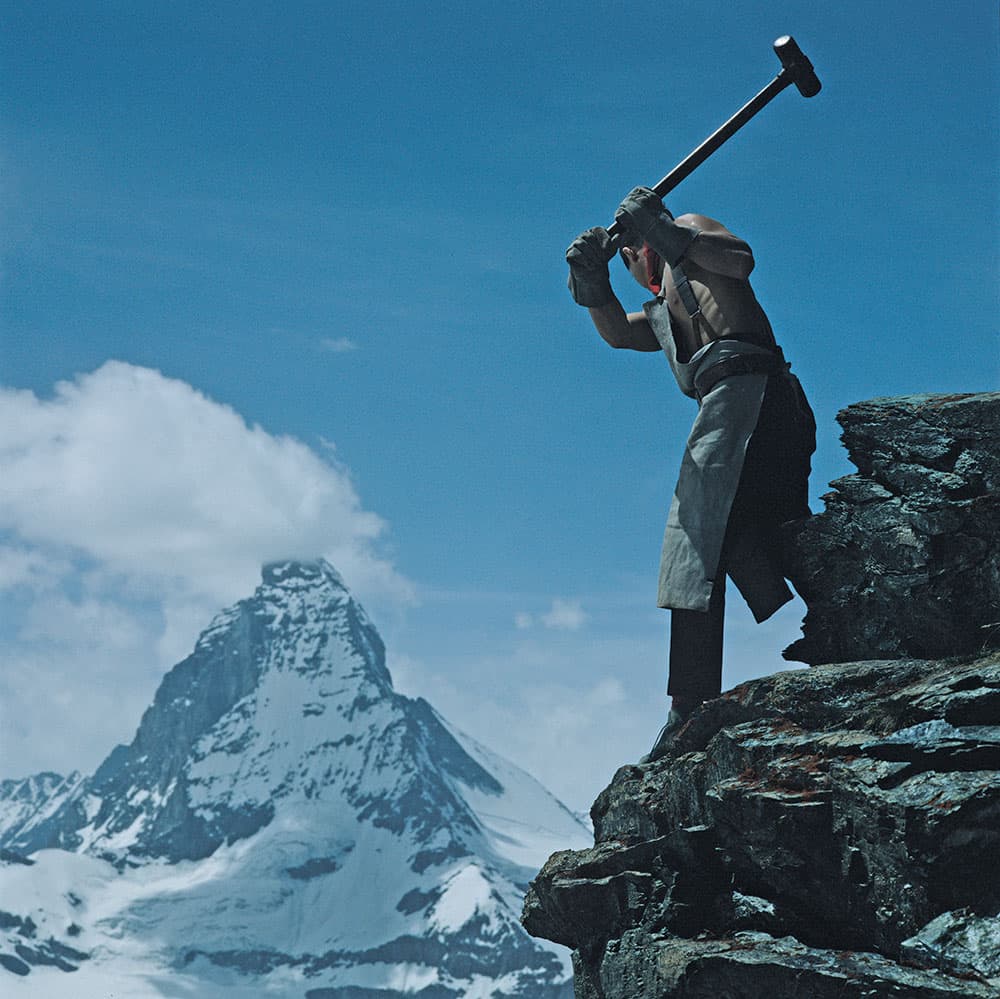
One of Brian’s all-time favourite images, shot on on a mountain in Switzerland as part of a photographic session for the album cover of Depeche Mode’s Construction Time Again. Credit: Brian Griffin
When asked about his favourites from all of the music photographs he’s ever shot, Griffin replied: “I enjoyed loads of them for their own reasons. I enjoyed shooting outdoors when I could take the knowledge I’d gained from working in the studio and employ it outdoors. A Broken Frame is a prime example of that.
“I also enjoyed the complexity of using knicker elastic and multiple exposures. If you look at the shot of King Sunny Adé – the black & white one with the rays of light around him – that was a triple exposure, but even that confuses me. I have to really think about how I did it! I’m very proud of those two images.
“Having said that, employing flash up a mountain in Switzerland for [Depeche Mode’s] Construction Time Again… there’s one shot where you see almost the [full] back of the guy with the hammer up the mountain; it’s slightly misty, slightly monochromatic, almost bleached colour – that’s my all-time favourite picture for its delicacy and feeling.”
Perhaps surprisingly, Griffin concluded: “I can’t say I enjoyed the music of many of the bands I shot. I was into krautrock, so there were few artists whose music I sympathised with. I enjoyed Echo and the Bunnymen, Iggy [Pop] and one or two others but I was more interested in trying to get the most powerful picture I could.”
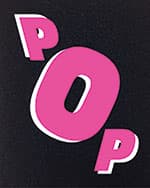
POP (GOST Books, ISBN: 978-1-91040-113-2, £40) features the music photographs, album cover work and portrait photography of Brian Griffin, shot between 1977 and 2014. A UK tour accompanying the book will follow in 2018.
Born in Birmingham in 1948, Brian Griffin studied photography at Manchester Polytechnic. Probably his best-known image is a colour shot for the cover of Depeche Mode’s album A Broken Frame. In September 2013 he received the Centenary Medal from the Royal Photographic Society and in November 2016 was inducted into the Album Cover Hall of Fame.








